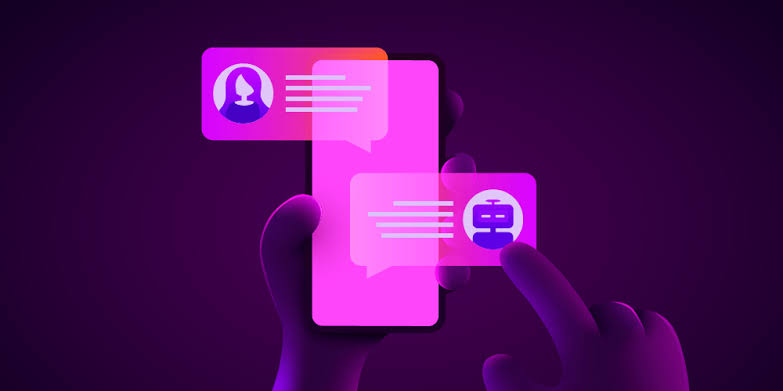In the rapidly evolving landscape of digital communication, chatbots have emerged as a pivotal interface for customer interaction. As technology advances, these AI-powered conversational agents are increasingly able to offer personalized and adaptive responses, tailoring their interactions to meet the unique preferences and needs of individual users. This article explores the mechanisms and significance of personalization and adaptivity in the world of chatbots.
The Basics of Chatbot Personalization
Personalization in chatbots refers to the ability of these systems to deliver customized experiences to users. This customization can range from addressing the user by name to remembering past interactions and preferences. The goal is to make each interaction feel individualized and relevant, thereby enhancing user engagement and satisfaction. Personalization relies on the chatbot’s ability to collect, analyze, and utilize data about the user, which might include past purchases, browsing history, or any other relevant information.
Data-Driven Insights: The Fuel for Personalization
The cornerstone of effective personalization is data. Chatbots leverage user data to understand behavior patterns, preferences, and needs. This data is gathered through direct interactions with the user, as well as through integration with other systems and databases. By analyzing this data using advanced algorithms and AI techniques, chatbots can deliver highly relevant and personalized content and recommendations.
The Impact of Personalization on User Experience
The impact of personalization in chatbots is profound. Personalized interactions can lead to higher user engagement, increased satisfaction, and stronger brand loyalty. Users are more likely to return to a chatbot that remembers them and can anticipate their needs. This level of personalization can transform a simple transaction into a meaningful interaction, building a deeper connection between the user and the brand.
What is a Chatbot? Understanding Their Core Functionality
At its core, a chatbot is an AI-driven software that interacts with users conversationally, typically through text or voice commands. The primary function of a chatbot is to provide information, assist in completing tasks, or facilitate transactions. The integration of personalization and adaptive responses elevates these capabilities, allowing chatbots to offer a more intuitive and human-like interaction experience.
Adaptive Responses: Chatbots Learning in Real-Time
Adaptive responses refer to the ability of chatbots to modify their behavior and responses based on real-time user interactions. Unlike static, pre-programmed responses, adaptive chatbots can learn from each interaction, adjusting their responses to suit the current context and user needs. This can include changes in language style, the complexity of information, or even the type of content presented.
Enhancing Customer Journey through Chatbot Personalization
One significant aspect of personalization in chatbots is enhancing the customer journey. By understanding the user’s specific stage in the buying or support process, chatbots can provide targeted assistance, guiding the user through various steps, from initial inquiry to post-purchase support. This tailored approach not only improves the efficiency of the interaction but also helps in building trust and rapport with the user, as the chatbot appears more attuned to the user’s immediate needs and concerns.
Techniques for Implementing Personalization and Adaptivity
Implementing personalization and adaptivity in chatbots involves several techniques. Natural Language Processing (NLP) enables chatbots to understand and interpret user queries. Machine learning algorithms are used to analyze user data and predict preferences. User profiling is another critical aspect, where demographic information and interaction history are used to create a more detailed understanding of each user.
Integration with Omnichannel Platforms
The integration of chatbots with omnichannel platforms marks a significant leap in personalization. By having a unified view of the user’s interactions across multiple channels, such as email, social media, or phone, chatbots can deliver a seamless and consistent experience. This omnichannel integration allows chatbots to leverage data from various touchpoints, ensuring that the conversation remains relevant and informed, regardless of the platform the user chooses to engage on.
Challenges in Personalization and Adaptive Responses
While the benefits of personalization and adaptivity are clear, implementing these features comes with challenges. Privacy concerns are paramount, as users are increasingly wary of how their data is used. Ensuring data security and complying with regulations like GDPR is essential. Additionally, maintaining the balance between personalization and intrusiveness is a delicate art, requiring careful design and execution.
Leveraging Advanced Analytics for Continuous Improvement
Advanced analytics play a pivotal role in refining the personalization capabilities of chatbots. By continuously monitoring and analyzing user interactions, businesses can gain insights into user preferences, behavior patterns, and satisfaction levels. This information is invaluable in fine-tuning the chatbot’s algorithms and responses, ensuring that the personalization and adaptivity aspects are always aligned with user expectations and evolving needs. This ongoing process of analysis and improvement is crucial for maintaining the relevance and effectiveness of chatbots in a dynamic digital landscape.
The Future of Personalization and Adaptive Responses
The scope of personalization and adaptivity in chatbots is bound to expand. With advancements in AI and machine learning, along with the increasing availability of big data, chatbots will become even more adept at understanding and anticipating user needs. This progression will likely lead to more sophisticated, nuanced, and human-like interactions, further blurring the lines between human and machine communication.
Personalization and adaptive responses represent a significant advancement in the capabilities of chatbots. By leveraging data and AI, these conversational agents are transforming the way businesses interact with their customers, offering more relevant, engaging, and satisfying experiences. As technology continues to advance, the potential for even more personalized and adaptive chatbots is vast, promising a future where digital interactions are as natural and intuitive as human conversations.
